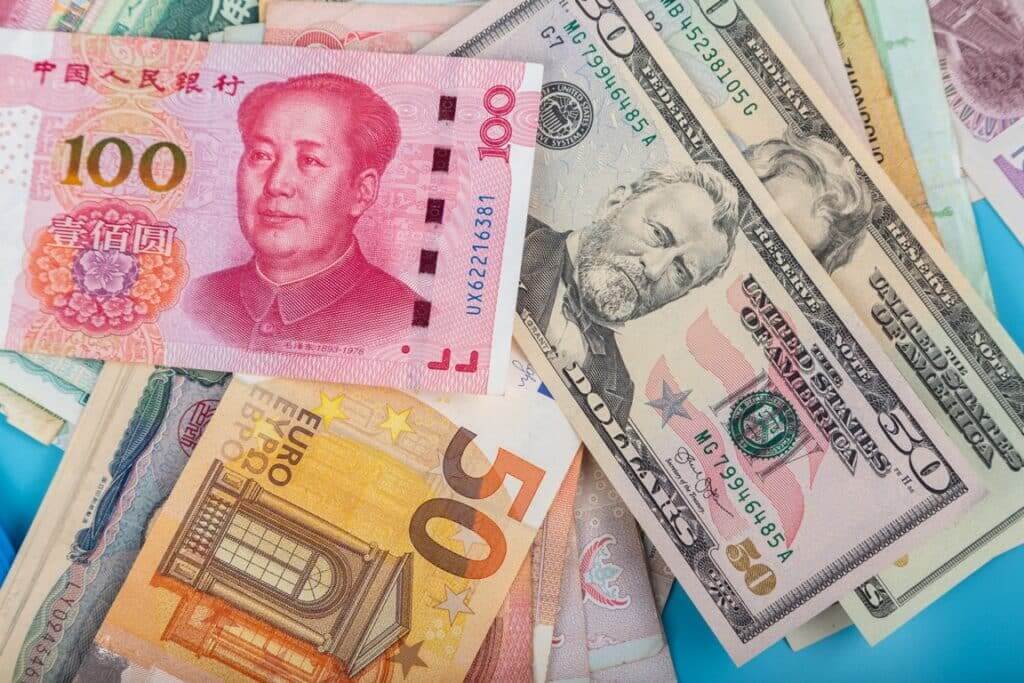The U.S. dollar remained firm on Tuesday. How is the euro faring?
The U.S. dollar declined in the previous session, but it managed to hold steady on Tuesday. The currency also surged forward versus the Japanese yen. The greenback suffered over the last several months but seemed set for its first monthly gain since September. The USD rally gathered momentum recently thanks to positive economic data. The latter encouraged traders’ hopes about more Fed interest rate hikes. The U.S. economy remains resilient despite high rates. That gives the Federal Reserve more leeway to continue its aggressive tightening policy.
On Tuesday, the dollar index remained flat at 104.7 against a basket of six major currencies. Despite that, it remained on track for a 2.5% monthly gain in February. Ray Attrill, the head of FX strategy at National Australia Bank, stated that the greenback rebounded thanks to upbeat data showing economic growth in January. The expectations about the Fed’s future moves also bolstered the currency.
Atrill also added that February’s data would likely determine the dollar’s course in the coming weeks. Meanwhile, U.S. Treasury yields have also surged forward. The two-year yield remains at a three-and- a-half-month peak.
The dollar gained the most versus the Japanese yen. It jumped by 0.4% to 136.78 yen, hitting its highest level in more than two months. The yen is struggling due to Japan’s ultra-easy policy. The central bank decided to keep yields pinned down. As a result, the Japanese yen is once more trading in the red.
Investors considered incoming Bank of Japan Governor Kazuo Ueda more hawkish at first. However, he announced this week that it was still early to speak about how the BOJ might shift its policy. The yen also plummeted to its lowest level in two months versus the euro and the sterling.
What about the euro and sterling?
The common currency traded flat at $1.0611 today. It rallied by 0.6% in the previous session, though. French inflation data came out higher than expected, weighing on the euro. On the other hand, short-dated euro area yields skyrocketed to their highest level in a decade.
Meanwhile, the British Pound added to its gains from Monday’s session against the greenback. It climbed up by 0.24%, exchanging hands at $1.2092 at last. Sterling soared by 1% in the previous session. The European Union and the United Kingdom are in negotiations over a new agreement for post-Brexit trading relations with Northern Ireland. The latter is known as the Windsor Framework.
This news bolstered markets, brightening the outlook for the British economy. Many investors were concerned about the U.K. after the country first announced its intentions to leave the EU. On Tuesday, British Prime Minister Rishi Sunak stated that this new agreement would pave the way for a new chapter in the U.K.’s relationship with the bloc.
On Tuesday, the greenback jumped by 0.5% versus the Swedish crown. According to new data, the country’s economy slowed more than forecast in the fourth quarter of 2022. That news put a damper on traders’ sentiment.
How are the EM currencies trading?
Asian currencies and shares fluctuated today. Some of them gained while others suffered losses. While USD traders anticipate further rate hikes from Fed, as such action usually bolsters the greenback, EM currencies suffer in the aftermath. They typically end in the red when the dollar rallies.
Many EM currencies traded lower due to market sentiment. The Thai baht remained on track to end the month with the highest losses in 23 years. On the other hand, the Philippine peso surged forward by 0.6%. Despite that, the currency seemed set to break a four-month winning streak. Malaysia’s ringgit plummeted by 0.2% on Tuesday, while Indonesia’s rupiah added 0.2%.
Furthermore, the baht shaved off 0.5% today. This month, the currency plunged by 6.4% overall, suffering its biggest monthly fall since September 1999. The Bank of Thailand noted that the country’s economy would likely show 3%-4% growth this year. Meantime, inflation remains at 5.02% currently. Economists expect it to lower within the central bank’s target range of 1%-3% in the second half of this year.
Forex markets forecast a third 25 basis point rate increase from the Fed this year. This news hasn’t helped the EM currencies. Michael Loh, the Asia FX strategist at BNP Paribas, stated that in the U.S., inflation is stickier than analysts expected, unlike many Asian economies where it has already lowered.

